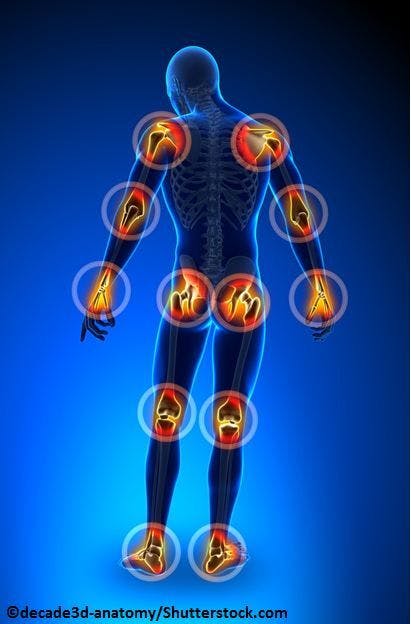Publication
Article
Psychiatric Times
Physician-Assisted Suicide and the Rise of the Consumer Movement
Author(s):
Should doctors be legally allowed to assist terminally ill patients in committing suicide?
©AlexeiZinin/ Shutterstock

“Death with dignity” is such a catch-phrase right now in the media. But for those of us who suffer in our dark thoughts every day, we are living “life with dignity.” Each day we live and make it through is a success. -Anonymous1
When my 89-year-old mother was in her final days, and I was at her bedside, she asked me a plaintive question: “Honey, how do I get out of this mess?” The mess, of course, was her increasing debilitation and weakness as her chronic illnesses began to sap her strength. As a physician and as her son, I felt a wave of anxiety wash over me. I was sure my mother was going to ask me if I could help her end her life-something I could not do in good conscience, either as a physician or as a son.
Fortunately, my mother did not ask me to assist in her death, and home hospice care later proved a valuable resource in helping my mother through her final days. Characteristically, as a strong, vibrant woman who was reluctant even to take an aspirin for a headache, my mother usually spurned the opiate medications repeatedly offered her by the hospice nurses. She found dignity in keeping her mind sharp and clear, and bearing whatever pain her last days would bring her. My mother’s stoical resolve was sometimes hard for my family to tolerate, but we respected her wishes.
Physician-assisted suicide worldwide
All this is in stark contrast to the modern-day movement that sees “death with dignity” as virtually synonymous with physician-assisted suicide (PAS) or physician-assisted dying. Which term is used often seems to depend on one’s attitude toward the process, and it is difficult to avoid “value-laden” terminology.2 The term “assisted dying” seems to find favor among those who believe that physicians should be allowed to prescribe lethal drugs to terminally ill patients who want to end their lives. So-called “death with dignity” legislation is now on the books in 4 US states (California, Oregon, Vermont, and Washington), which permits physicians to write prescriptions for lethal drugs under certain carefully prescribed circumstances: for example, when a mentally competent adult with a terminal illness is likely to die within a few months and makes multiple requests for assistance in dying. In much of Europe, assisted dying is a much broader notion. For example, as the BBC notes:
In the Netherlands, the patient’s suffering must be unbearable, with no prospect of improvement. The suffering need not be related to a terminal illness and is not limited to physical suffering such as pain. It can include, for example, the prospect of loss of personal dignity or increasing personal deterioration, or the fear of suffocation.3
Canada is now debating similar legislation, and one Canadian proposal seeks to extend assisted dying to persons with intractable mental illnesses-including mature adolescents.4* It remains to be seen whether that component of assisted dying ever finds its way into Canadian law, but the mere consideration of the proposal has set off alarm bells among medical ethicists.
In 2013, a Massachusetts initiative to permit death with dignity by allowing terminally ill patients to be given lethal drugs was narrowly defeated by voters (51% to 49%). The initiative was strongly opposed by, among others, the Massachusetts Medical Society, which declared that “. . . physician-assisted suicide is inconsistent with the physician’s role as healer and health care provider,” according to then-president Lynda Young, MD.5 “At the same time,” Dr. Young said, “. . . we recognize the importance of patient dignity and the critical role that physicians have in end-of-life care,” including “the alleviation of pain and suffering at the end of life.”
In recent years, support for PAS has grown substantially among the general public. According to Gallup polls, in 2015, nearly 7 in 10 Americans (68%) said doctors should be legally allowed to assist terminally ill patients in committing suicide-an increase of nearly 20 points since 2013.6 Among physicians, PAS remains intensely controversial, although in recent years, the percentage of physicians who favor some form of PAS appears to have grown. For example, a 2007 study in Vermont found that 50.1% of physicians reported they would participate in PAS if it were legalized, whereas previous state and national surveys found that 25.5% to 36% of physicians would participate in legalized PAS.7
And yet, despite these trends that tend to favor PAS, most national and state medical organizations oppose it, as do many nursing associations; eg, historically, the American Medical Association (AMA), the American College of Physicians, and the American Nurses Association are all on record as opposing PAS, although the AMA is reportedly reassessing its traditional position.8
As a psychiatrist and medical ethicist, I have written extensively on PAS and have encountered a wide variety of responses from both colleagues and the general public.9-11 In the spirit of self-disclosure, I am opposed to PAS on a variety of ethical grounds-even though I believe that a mentally competent adult with a terminal illness ought to be at liberty to end his or her own life. But that is a very different proposition than the claim that physicians ought to assist in bringing about the death of their patients.
In this essay, I do not intend to re-litigate all the arguments favoring or opposing PAS; rather, I want to examine the pro-PAS position in light of the consumer-rights movement. I have come to the conclusion that the increasingly positive view of PAS among the general public-and perhaps also among some physicians-is linked, in part, to the rise of the consumer movement in the US and parts of Europe. Of course, that is not to say that there is a direct causal link between the 2 phenomena, or that other secular trends have not also contributed to the increased acceptance of PAS.
Consumers or patients? Providers or physicians?
The first international conference of leaders from consumer organizations took place in The Hague in March 1960-arguably, the beginning of the consumer-rights movement.12 Over time, the consumer movement developed its vision into a set of 8 basic consumer rights, including the right to satisfaction of basic needs, such as food, shelter, and health care; the right to be informed; the right to be heard; and-perhaps most important-the right to choose, defined as the ability “. . . to select from a range of products and services.”12 According to Thomas W. Moloney and Barbara Paul,13 the consumer movement began to encompass health care in the early 1990s. Baby boomers began to insist on a greater voice in medical decision-making, particularly with regard to hospitalization. As Moloney and Paul put it:
Upon entering a hospital, patients must surrender control over their time, privacy, activities, comfort, and clothes. They forgo the reassurance, intimacy, and diversions from worry that companionship of family and friends can provide. Patients are interviewed, wheeled, scoped, poked, and processed on whatever shifting schedules they can be slotted into, alongside hundreds of others who are hurriedly “worked up” in similar ways. . . . Hospitalization amounts to the gravest form of incarceration most non-criminals ever experience. This hospitalization process was never designed with the patient/customer in mind [italics added].13
The transformation of the patient-a word derived from the Latin pati, “to suffer, endure”-into a “consumer” or “customer” is therefore a relatively recent development, arising in the past 30 to 40 years. On the one hand, this shift has had several beneficial results with respect to the care of hospitalized patients: eg, making hospitals more responsive to the wishes and needs of patients, with a greater emphasis on shared decision-making. On the other hand, contemporaneous with the rise of the term “consumer,” the term “provider” has become a substitute in many settings for the terms “doctor” or “physician.” By labeling physicians as mere providers of services, the consumer movement-abetted by insurance companies, and sometimes by physicians themselves-may have undermined the historical role of physicians as teachers and healers who have answered a calling.
This was expressed recently in an open letter to the AMA, by internist Suneel Dhand, MD, and William J. Carbone, chief executive officer, American Board of Physician Specialties.
. . . [a] big paradigm shift in health care has been a push to no longer address physicians by their true job title, but by the word “provider” instead. This has occurred at all levels of administrative and electronic communication, and is now also being used with patients. . . . The word “doctor” is over 2000 years old, aptly derived from the Latin doctus, meaning to teach or instruct. . . . The word “provider” is a non-specific and nondescript term that confers little meaning. We, therefore, call on the American Medical Association and all state medical boards to consider discouraging and terminating the use of the word “provider.” . . . If a more generic term is necessary, consideration to the term “clinician” should be given. We believe that this affords the courtesy and respect that is due to a hard working and dedicated profession.”14
As noted earlier, the consumer movement has been reinforced by the insurance industry, with regards to the terms “consumer” and “provider.” In response to the article, “Making Decisions With, Not for, Patients,”15 Dr. Stephen Zimmer (Family Medicine) wrote:
I’m sorry, but aren’t most patients already heavily involved in the decision making process? They often just call in and actually TELL me what I’m SUPPOSED to call in for them. The physician’s role is to call the insurance company and ask permission to order a test (which does not directly profit the ordering physician at all) or to start a medication (which is usually testosterone-another drug that male patients often request). I have been a physician for several years and have seen the system change such that the doctor is actually a “Provider” and no longer a physician. And if I do actually suggest a treatment, medication, or procedure (which again, contrary to popular belief, does not benefit me in a financial way) I am often told by the insurance company that this cannot be done unless I can prove the benefit [emphasis is Dr. Zimmer’s].16
Rights vs liberties
The “provider” label has also reinforced the notion that the consumer or customer is entitled to certain rights that-in some circumstances-may be at odds with the traditional ethical constraints of the physician. The consumer/customer-oriented model seemed to give priority to the patient’s wishes rather than to the accepted norms of medical practice. In my view, this has been particularly evident in the narrative put forward by groups that advocate PAS. Their main contention invokes the language of rights and entitlement, rather than the language of liberties.
This distinction is critical in assessing the claims of those who assert PAS as a “right.” The late Thomas Szasz, MD-famous for his libertarian views-made this distinction: a right is a privilege or activity that requires others to assist or cooperate in some fashion; a liberty is something that we may exercise without imposing obligations on others.17 So, for example, if citizens have a right to vote, the government incurs an obligation to provide a mechanism for voting. In contrast, citizens may be at liberty to smoke, but the government has no obligation to provide cigarettes. Szasz did not believe that suicide was a full-fledged right, but rather a personal liberty. He argued that people ought to be left alone to commit suicide-but he did not believe that physicians ought to “assist” in killing their patients.
Advocates of PAS (or “assistance in dying”) often adopt the consumer-oriented language of “rights.” Thus, in their book, To Die Well: Your Right to Comfort, Calm, and Choice in the Last Days of Life, Dr. Sidney Wanzer and Dr. Joseph Glenmullen wrote:
Doctors vary in their willingness to discuss end-of-life options and they vary in their comfort level with patients who want to maintain control. . . . You are a customer who is purchasing a product (health care) and you have every right to choose who provides that care . . . the patient as a consumer has the right to make the decision [italics added].18
Similarly, the organization Last Acts is described in the Wanzer-Glenmullen book as “. . . a national coalition of health-care providers and consumers dedicated to improving care near the end of life.”18
A mentally competent adult with a terminal illness ought to be at liberty to end his or her own life. But that is a very different proposition than the claim that physicians ought to assist in bringing about the death of their patients.
Indeed, we can expect that this consumer-centered perspective is likely to become more common in the coming years. As British journalist Yvonne Roberts put it, “. . . as our population ages, choosing when to make an exit will be regarded as a consumer’s right by individuals reared in a society in which market forces dominate and the customer is always correct.”19
Conclusion
As a medical ethicist, I find the trend toward the commodification of health care very troubling. To be sure, there have been many positive aspects of the consumer rights movement, as it has influenced medical care. For example, Drs. Wanzer and Glenmullen, to their credit, emphasize the patient’s right to adequate pain relief at the end of life-a critical issue that orthodox medicine, historically, has sorely neglected.
That said, I don’t believe most physicians entered the field of medicine with the understanding that they would be “providers” servicing “consumers” or “customers,” whose wishes were to be respected no matter how they conflict with traditional medical ethics. The challenge going forward is how physicians and patients-not providers and consumers-can work collaboratively and respectfully, while preserving the traditional role of the physician as healer and teacher. This challenge is nowhere more critical than in the complex and controversial area of end-of-life decisions.
*Addendum-As of this writing (7/8/16), the proposal re: PAS for mature minors with mental illness has not yet been enacted into Canadian law. However, Canada’s Parliament recently passed Bill C-14, which provides for “one or more independent reviews relating to requests by mature minors for medical assistance in dying”-potentially including “requests where mental illness is the sole underlying medical condition.” If, after review, the mental illness clause is enacted into law, this could mean that young people with potentially reversible conditions like major depression or schizophrenia would be able to receive a physician’s “assistance” in committing suicide. Thus, according to a CBC report, “Health Canada will continue to work with the provinces and territories as provisions of the legislation come into force, and further study will be done with respect to medical assistance in dying in the context of mature minors, people for whom mental illness is the sole underlying condition and advance requests.” Source: http://www.cbc.ca/news/politics/assisted-dying-bill-senate-approval-1.3640195.
This article was originally posted on 7/7/2016 and has since been updated.
Disclosures:
Dr Pies is Editor in Chief Emeritus of Psychiatric Times, and a Professor in the psychiatry departments of SUNY Upstate Medical University, Syracuse, NY, and Tufts University School of Medicine, Boston.
References:
1. Borchard TJ. Is physician-assisted suicide right for severe psychiatric disorders? PsychCentral. http://psychcentral.com/blog/archives/2016/05/17/is-physician-assisted-suicide-right-for-severe-psychiatric-disorders/. Accessed June 28, 2016.
2. Starks H, Dudzinski D, White N. Physician aid-in-dying. Ethics in Medicine. https://depts.washington.edu/bioethx/topics/pad.html. Accessed June 28, 2016.
3. Lewis P. Assisted dying: what does the law in different countries say? BBC. http://www.bbc.com/news/world-34445715. Accessed June 28, 2016.
4. Harper T. Call for assisted dying for our young will prove most emotional, contentious. The star.com. https://www.thestar.com/news/canada/2016/02/26/call-for-assisted-dying-for-our-young-will-prove-most-emotional-contentious-tim-harper.html. Accessed June 28, 2016.
5. Massachusetts Medical Society. Physicians reaffirm opposition to physician-assisted suicide. December 3, 2011. http://www.massmed.org/News-and-Publications/MMS-News-Releases/MMS-Physicians-Reaffirm-Opposition-to-Physician-Assisted-Suicide/. Accessed June 28, 2016.
6. Dugan A. In U.S., support up for doctor-assisted suicide. http://www.gallup.com/poll/183425/support-doctor-assisted-suicide.aspx. Accessed June 28, 2016.
7. Craig A, Cronin B, Eward W, et al. Attitudes toward physician-assisted suicide among physicians in Vermont. J Med Ethics. 2007;33:400-403.
8. Compassion & Choices. AMA praised for action leading to study of aid in dying. https://www.compassionandchoices.org/ama-praised-for-action-leading-to-study-of-aid-in-dying/. Accessed June 28, 2016.
9. Pies R. Physician-assisted suicide: why medical ethics must sometimes trump the patient’s choice. PsychCentral. http://psychcentral.com/blog/ archives/2012/10/07/physician-assisted-suicide-why-medical-ethics-must-sometimes-trump-the-patients-choice/. Accessed June 28, 2016.
10. Pies R. Merciful assistance or physician-assisted killing? PsychCentral. http://psychcentral.com/ blog/archives/2012/09/30/merciful-assistance- or-physician-assisted-killing/. Accessed June 28, 2016.
11. Pies R. Physician-assisted dying for adolescents with intractable mental illness? Psychiatric Times. June 2016;33:1, 27-31.
12. Consumers International. http://www.consumersinternational.org/who-we-are/consumer-rights/. Accessed June 28, 2016.
13. Moloney TW, Paul B. The consumer movement takes hold in medical care. Health Affairs. 1991; 10:268-279.
14. Dhand S, Carbone WJ. Physicians are not providers: an open letter to the AMA and medical boards. November 30, 2015. http://www.kevinmd.com/blog/2015/11/physicians-are-not-providers-an-open-letter-to-the-ama-and-medical-boards.html. Accessed June 28, 2016.
15. Mohammed SF, Montori VM. Making decisions with, not for, patients. Medscape. May 19, 2015. http://www.medscape.com/viewarticle/844541. Accessed June 28, 2016.
16. Zimmer S. Comment. http://www.medscape.com/viewarticle/844541#vp_4. Accessed June 28, 2016.
17. Szasz T. Fatal Freedom. Syracuse, NY: Syracuse University Press; 1995.
18. Wanzer S, Glenmullen J. To Die Well: Your Right to Comfort, Calm, and Choice in the Last Days of Life. Boston, MA: Da Capo Press; 2008.
19. Roberts Y. Foggy guidelines won’t help the dying. The Guardian. September 23, 2009. https://www.theguardian.com/commentisfree/2009/sep/23/assisted-suicide-dpp-guidelines. Accessed June 28, 2016.
For further reading
Battin MP, van der Heide A, Ganzini L, et al. Legal physician-assisted dying in Oregon and the Netherlands: evidence concerning the impact on patients in “vulnerable” groups. J Med Ethics. 2007;33:591-597.
Finlay IG, George R. Legal physician-assisted suicide in Oregon and The Netherlands: evidence concerning the impact on patients in vulnerable groups-another perspective on Oregon’s data. J Med Ethics. 2011;37:171-174.
Ganzini L, Goy ER, Miller LL, et al. Nurses’ experiences with hospice patients who refuse food and fluids to hasten death. N Engl J Med. 2003;349:359-365.































